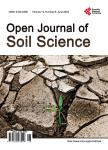Snake River: A Navigation and Spawning Dilemma
Snake River: A Navigation and Spawning Dilemma作者机构:Department of Natural Resources College of Agricultural Consumer and Environmental Sciences University of Illinois Urbana USA
出 版 物:《Open Journal of Soil Science》 (土壤科学期刊(英文))
年 卷 期:2021年第11卷第10期
页 面:479-503页
学科分类:08[工学] 0812[工学-计算机科学与技术(可授工学、理学学位)]
主 题:Bonneville Flood Hells Canyon Ice Harbor Oregon Trail Shoshone Snake River Plain Wheat Growers Association
摘 要:The Snake River in northwestern United States is 1735 km long, the largest tributary of the Columbia River and is the 13th longest river in the United States. The Snake River drainage basin includes parts of six U.S. states. The Snake River Plain was created by a volcanic hotspot that lies beneath Yellow-stone National Park. The previous Ice Age carved out canyons, cliffs and waterfalls along the middle and lower Snake River. The Missoula Flood was to the north and Bonneville Flood to the south altered the Snake River and surrounding landscape. The Snake River has a drainage basin of 282,000 km2 in the states of Oregon, Washington, Utah, Nevada and Idaho. The Snake River drops from mountain elevations of 3000 m to its confluence with the Columbia River. The river is one of the most biologically diverse freshwater systems in the United States with trails designed to promote recreational tourism, increase use of the Snake River and create generations of people who care about the river and are willing to protect and provide environmental stewardship of the river watershed resources.



